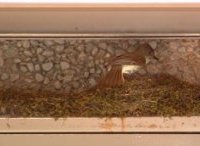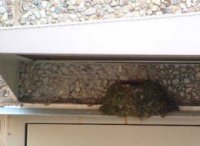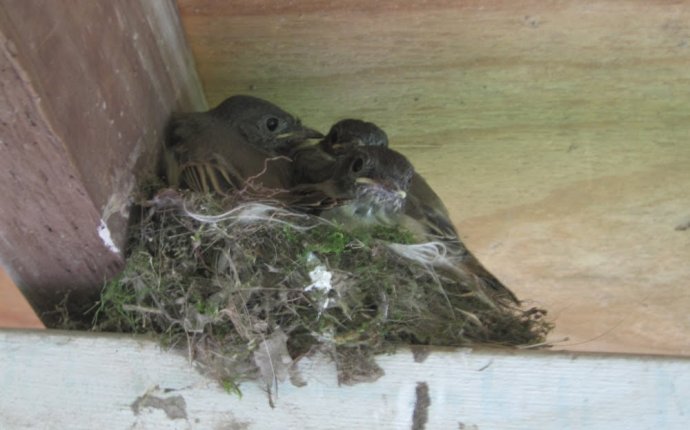
Phoebe Bird Images
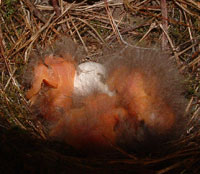 The parents made a popping noise with their wings to scare off intruders.
The parents made a popping noise with their wings to scare off intruders.
Incubation typically lasts 15-16 days. These babies hatched on May 30 (the day this photo was taken.)
This photo was taken on Day 6.
Eastern Phoebes also sometimes re-use the same nest for a second brood. Chris indicated that this location has had an active Phoebe nest site for at least 9 years. The material to the left of this nest is the remains of a previous nest that blew down.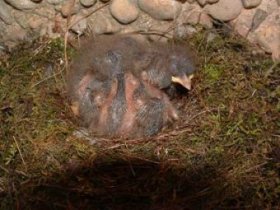 She glued it back up with caulk about 5 years ago (there were nestlings in there that successfully fledged despite the fall and drenching) and they used it until this spring when it came down again. This spring they built the newer cup to the right. One or two years there was construction (human) and the nest was abandoned for a time, but always at least one brood a season was produced there.
She glued it back up with caulk about 5 years ago (there were nestlings in there that successfully fledged despite the fall and drenching) and they used it until this spring when it came down again. This spring they built the newer cup to the right. One or two years there was construction (human) and the nest was abandoned for a time, but always at least one brood a season was produced there.
The nest and nestlings were crawling with bird mites. This photo was taken on Day 8.
Both parents feed the babies. During the first few days, food may be regurgitated.
Nests may also be found on rafters, trestles, or plastered on rocky ledges or concrete or wooden walls. Sometimes in long open areas like a bridge girder, a female builds many nests, side by side.
 Day 9.
Day 9.
Day 12.
Day 13.
After fledging, the young are dependent on the parents for 1-3 weeks. Phoebes may have two broods per year, and the male may be left to feed the first brood. These nestlings probably fledged on Day 16.
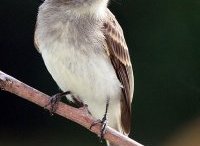
A phoebe getting ready to take the big leap. P hoto by Linda Ruth of CT.
Adult Eastern Phoebe (Sayornis phoebe). Photo by Dave Kinneer.
Adult Eastern Phoebes are about the same size as a bluebird. Sometimes they are confused with Eastern Wood Peewees, which have wing bards and a two-colored bill (lower part of beak is lighter).
The top of of an Eastern Phoebe's head is blacker than the back. They tend to dip their tail when perching. Their call (fee-bee) distinguishes them from other flycatchers.
According to "Nestboxes of Alberta Birds" by Brian Shantz and Myrna Pearman, Phoebes "prefer open woodlands, the edges of clearings, wooded banks of lakes and streams, and are often found in farmyards and along wooded country roads where they nest under bridges."
